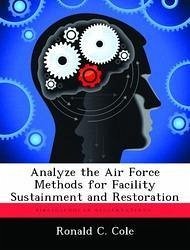
An Exploratory Study of the Air Force's Technical IT Infrastructure Flexibility

PAYBACK Punkte
9 °P sammeln!
The Air Force presently spends more than $4.9 billion annually on information technology (IT). However, the IT infrastructure has been identified as inappropriate for supporting the Air Force mission. To improve this situation the Air Force has identified infrastructure flexibility as key to future success. This led to the thesis question: What is the Air Force's current level of IT infrastructure flexibility? This thesis looked at two constructs that indicate IT infrastructure flexibility- modularity and integration. A survey was sent to communication, computer, and information career field m...
The Air Force presently spends more than $4.9 billion annually on information technology (IT). However, the IT infrastructure has been identified as inappropriate for supporting the Air Force mission. To improve this situation the Air Force has identified infrastructure flexibility as key to future success. This led to the thesis question: What is the Air Force's current level of IT infrastructure flexibility? This thesis looked at two constructs that indicate IT infrastructure flexibility- modularity and integration. A survey was sent to communication, computer, and information career field members to measure the degree of modularity and integration. Based on respondents' views, the Air Force's IT infrastructure does have some areas of flexibility, but other areas indicate very low flexibility. A primary concern is the flexibility of the Air Force's data and applications. Responses to both data flexibility and application flexibility survey questions consistently indicated low flexibility. The responses suggest the Air Force could achieve greater flexibility by turning its attention to database issues such as variety and adaptability of database protocols. Communications and platform flexibility are partially supported. Results indicate that reducing communication bottlenecks and fewer steps for accessing data from external end user locations could enable greater flexibility. Senior and junior IT leaders only diverged on one area of flexibility. Senior leaders had a higher rating on the number of entry points or interfaces available to external end users. This work has been selected by scholars as being culturally important, and is part of the knowledge base of civilization as we know it. This work was reproduced from the original artifact, and remains as true to the original work as possible. Therefore, you will see the original copyright references, library stamps (as most of these works have been housed in our most important libraries around the world), and other notations in the work. This work is in the public domain in the United States of America, and possibly other nations. Within the United States, you may freely copy and distribute this work, as no entity (individual or corporate) has a copyright on the body of the work. As a reproduction of a historical artifact, this work may contain missing or blurred pages, poor pictures, errant marks, etc. Scholars believe, and we concur, that this work is important enough to be preserved, reproduced, and made generally available to the public. We appreciate your support of the preservation process, and thank you for being an important part of keeping this knowledge alive and relevant.












